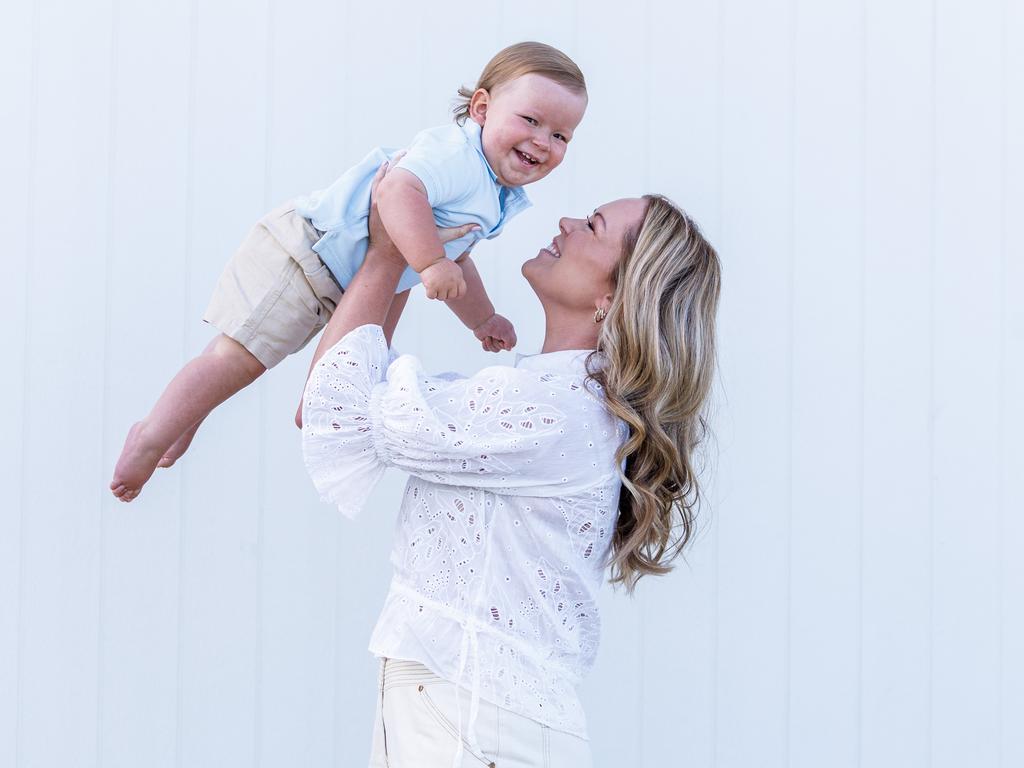‘I knew something wasn’t right’: Madeleine’s first birth left her scarred, now only a doctor will do
Madeleine Kendrick put all of her trust in the public system for her first birth but felt the pressure for natural delivery put her baby at risk. Now she’s paying thousands for an obstetrician for her second baby, and says it’s worth every cent.

In her third trimester of pregnancy, first-time mother Madeleine Kendrick had a sense that something wasn’t right. Her baby was constantly flipping positions in a phenomenon in late pregnancy known as an unstable lie.
“I was trying to flag that something wasn’t right over and over again, but I literally saw a different nurse every appointment,” the 31-year-old says of her experience in public hospital maternity care.
“I kept getting dismissed and brushed off. They were very natural delivery and pro minimal intervention, which is great if everything’s going fine. They were very ‘woo-woo’ about natural birthing. It was so jarring to see in a hospital environment, they were willing to be like that.
“They were looking at KPIs, they were looking at metrics and outcomes that were familiar to them, and the circumstances of my situation just wasn’t that at all. I definitely should have been escalated to an obstetrician much earlier.”
Kendrick, an academic, was in favour of having a C-section as her due date approached, but she was rebuffed by midwives and never saw an obstetrician until daughter Ruby’s birth became complicated. Kendrick was in labour for two days and pushing for four hours when Ruby’s heart rate dropped dramatically and an obstetrician intervened to order an immediate vacuum-assisted delivery.
“At that moment I was just sitting there, going: this could all have been avoided if you just made the call for a C-section a week ago,” Kendrick says. “But they were literally so unwilling. It wasn’t until the obstetric registrar walked into the room just to do their routine checks, took a look at the monitor, took a look at me, and said: ‘We have to get this baby out right now.’ Unfortunately, that was the first time I’d seen an obstetrician, when I was actively pushing.”

Now pregnant with her second child, Kendrick is under the care of a private obstetrician and says the experience has been like “night and day” compared with her care in a public labour ward. Her experience in the public system reflects what research has highlighted about public maternity care: that it is critically fragmented, placing women and babies at risk.
“I got the impression when the obstetrician walked in, they hadn’t been told anything,” Kendrick says. “Nothing was handed over. There was no communication with midwives. I have a feeling if my case had been flagged at any point before then they would have intervened quite quickly, but I just got the distinct impression that the nurses themselves were a bit hostile to the doctors, like they weren’t motivated to work as a team with them for whatever reason, and they had the belief that midwifery care was sufficient and nobody else was required.
“They only ever called the doctor in for genuine emergencies, which my birth was very rapidly approaching. We are so lucky that everything worked out OK and just a couple of vacuum assists managed to get my baby out safely, but I still had some tearing. And the post-partum period was a nightmare as well. The birth was traumatising. It took a few months to recover from that.”
Fragmentation of care in labour wards is being blamed for rising adverse outcomes in public hospital births, in which the rate of stillbirth and neonatal death is twice that of private deliveries and mothers are three times likelier to sustain birth trauma and severe haemorrhage.
Continuity of care with teams of known midwives is the exception in public hospitals and the only model that provides true continuity of care in pregnancy and birth – antenatal care with a private obstetrician and obstetric delivery in a private hospital – is under threat in Australia amid private birth unit closures.
The causes are multifactorial: workforce shortages and the high costs of running maternity units are becoming unsustainable for private hospitals amid low payments from insurers; families cannot afford high out-of-pocket costs for antenatal care; and insurance policies covering maternity are prohibitively expensive.
“I went out of my way to get private health insurance to prepare for this current pregnancy,” says Kendrick, who always wanted a large family. “All up, I think the out-of-pocket costs are about four grand, but that’s after private health insurance, which is about $300 a fortnight, so it’s not cheap, but it’s absolutely worth it for the peace of mind. The experience has been so different already.
“If private birth is no longer a choice, we’re not having any more kids after this one, just full stop.”






To join the conversation, please log in. Don't have an account? Register
Join the conversation, you are commenting as Logout